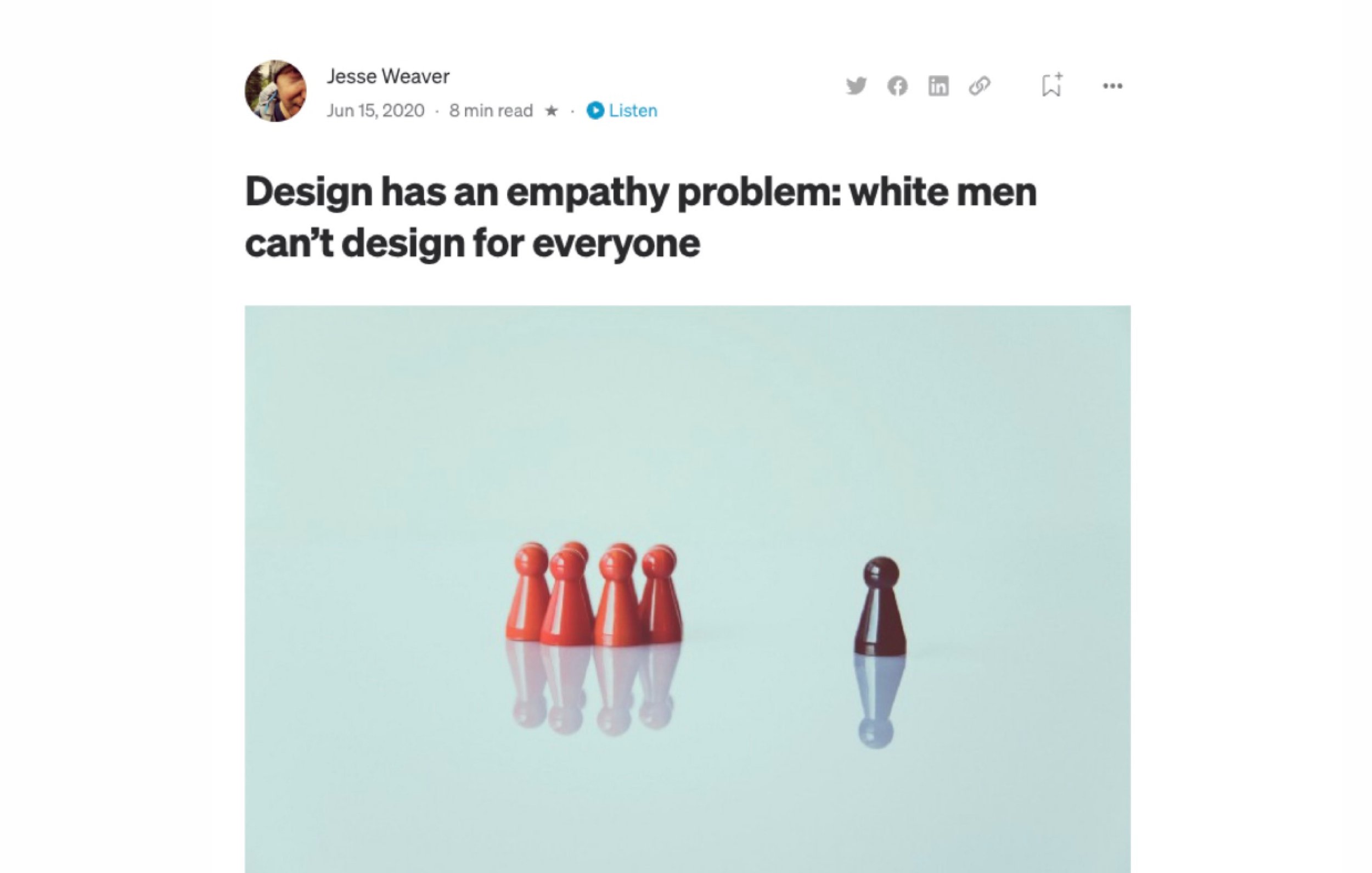Excluded Design
Every designer does it: excluding people unconsciously in their design. Excluded Design helps you and your team to create a mindset where you consciously exclude people in your design. It may sound paradoxical, but by consciously excluding people, your design becomes more inclusive. Allow me to explain…
What is Excluded Design?
Awareness is a powerful tool and that is what Excluded Design is built on. Specifically, Excluded Design is a digital confrontatiol tool for design teams. Which you mainly use at the beginning of your design.Excluded Design aims to create awareness in you and your team about the importance of diversity in the people you work with. The more diverse your team, the more inclusive your design becomes.Excluded Design believes that as a designer, you have a limit of empathy: you cannot empathise with everyone. It is therefore impossible to design something that works for everyone, but you still achieve a lot. With awareness and advice on a diverse team composition, you can start the design process with a more inclusive view.
Excluded Design wants to create this awareness in 4 steps:
🧠 1. Stop & Think
Excluded Design starts with creating self-awareness through self-observation. It helps you to stop and think about yourself and how you create.
🌈 2. Spectrum of Perspectives
During this phase, designers frame their own perspective in a 'spectrum', so that it can be discussed and compared with the design team. In addition, everyone unknowingly fills in one perspective of their teammates, which is called the 'challenge'. This challenge encourages the exposure of individual prejudices of designers.
👂 3. Listening
The identity spectrum phase is discussed, making it clear to everyone which identities are present in the team. The possible prejudices of individual designers are also discussed. During the entire phase, the following question is key; 'how do the identities in your team influence the design decisions you make?'
⚖️ 4. Check & Balance
With this data, it's possible to give an advice on which perspective traits are good to get on board in your team (e.g. with co-creation). During the design process, Excluded Design will give you tools to pursue the advice as well as possible.
Experience the prototype in Figma
How did this topic arise?
It all started in February 2020, when I went to Bangalore in India with a classmate to study Human-Centered Design for six months.
There, we worked together with many Indians, and we noticed that they have a different worldview than we do, which clearly influences the way you design. With these thoughts in mind, back in the Netherlands, we started designing a tool that would support designers in designing for cultures other than their own.
That tool, Unravel Cultures, was in our eyes a success considering the time we had available. It was still far from perfect, but we had painted a strong picture of the importance of being aware of the differences in cultures and what influence that can have on your design.
We were all triggered again when we read the article by Weaver, 2020; 'Design has an empathy problem: white men can't design for everyone'. The title says it all, this needed more research. It eventually became the sequel to Unravel Cultures and the starting point for Excluded Design.





